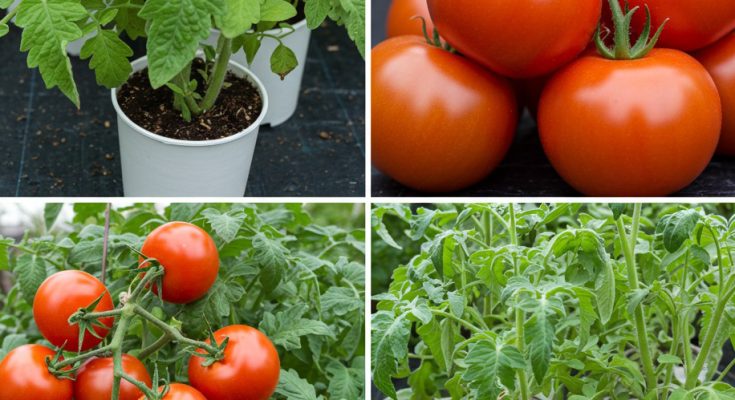In this article, we’ll discuss a highly effective homemade fertilizer that tomatoes absolutely love, and how to apply it to give your plants the best start possible.
Why Fertilizing Tomatoes Is Important
Tomatoes are heavy feeders, meaning they require a lot of nutrients to grow healthy and produce fruit. They need a balanced supply of nutrients throughout their growing season, including nitrogen, phosphorus, and potassium, as well as trace minerals like calcium and magnesium. Without adequate fertilization, tomatoes may struggle with stunted growth, poor flowering, and lower yields.
By adding the right fertilizer when planting seedlings, you give your tomato plants the nutrients they need to establish strong roots and start producing fruit early in the growing season. The key is to choose a fertilizer that promotes healthy root development and supports fruiting.
The Best Fertilizer for Tomatoes
One of the best fertilizers for tomatoes is a balanced, organic mixture that is rich in essential nutrients and promotes soil health. Here’s a simple recipe you can make at home using natural ingredients:
Ingredients:
-
-
1 tablespoon of fish meal or fish emulsion (high in nitrogen and phosphorus)
-
1 tablespoon of bone meal (rich in phosphorus and calcium)
-
-
-
1 tablespoon of compost or well-rotted manure (provides organic matter and trace nutrients)
-
1 tablespoon of Epsom salt (magnesium sulfate for strong cell walls and fruit production)
-
2 tablespoons of wood ash or crushed eggshells (for additional potassium and calcium)
-
Instructions:
-
-
In a small bowl, combine the fish meal, bone meal, compost, Epsom salt, and wood ash or eggshells. Mix the ingredients together to create a nutrient-dense blend.
-
Add the mixture to the planting hole when transplanting your tomato seedlings. For each plant, place 1–2 tablespoons of the fertilizer mix at the bottom of the hole before planting. This will give the roots access to the nutrients they need from the start.
-
Gently mix the fertilizer into the soil at the base of the hole and then plant the seedling. Water well after planting.
-
This homemade fertilizer provides a balanced mix of nutrients that are essential for early tomato plant growth and helps promote strong root systems. It also helps prevent common nutrient deficiencies, such as blossom end rot, which is often caused by calcium deficiency.
How to Apply Fertilizer Throughout the Growing Season
While applying the fertilizer at planting time is crucial, ongoing feeding throughout the growing season will ensure your tomato plants continue to thrive and produce a high yield.
-
-
First Feeding (Planting): As mentioned, apply the fertilizer mix at planting time to give seedlings a strong start.
-
Second Feeding (Two Weeks After Planting): After the plants have established themselves and are actively growing, apply a liquid fertilizer that is high in potassium, like a compost tea or a diluted fish emulsion solution. This will support continued root growth and encourage the development of flowers and fruit.
-
-
Third Feeding (When Fruit Begins to Form): Once the tomato plants begin to set fruit, switch to a fertilizer that is higher in potassium and phosphorus to support fruit development. Use compost tea or a diluted liquid fertilizer to feed the plants every 2–3 weeks.
-
Ongoing Care: If you notice any signs of nutrient deficiencies, such as yellowing leaves (nitrogen deficiency) or curled leaves (magnesium deficiency), you can address them with targeted fertilization. Epsom salt can be applied to correct magnesium deficiency, and fish meal can help boost nitrogen levels.
Additional Tips for Maximizing Tomato Yields
While proper fertilization is crucial, other factors also contribute to a successful tomato harvest:
-
-
Sunlight: Ensure your tomato plants receive at least 6–8 hours of direct sunlight per day. Tomatoes thrive in full sun and need warmth to produce fruit.
-
Watering: Water consistently and evenly, making sure the soil stays moist but not waterlogged. Avoid wetting the leaves, as this can lead to fungal diseases. Water at the base of the plant in the morning to give the plants plenty of time to dry before evening.
-
-
Pruning: Prune the lower leaves and any suckers (side shoots) that appear in the leaf axils to help the plant focus energy on growing strong stems and producing fruit.
-
Mulching: Use mulch around your tomato plants to retain moisture, suppress weeds, and regulate soil temperature. Organic mulches like straw or compost work well.
Common Tomato Fertilization Mistakes to Avoid
While fertilizing is essential, it’s important to avoid over-fertilizing your tomatoes. Too much nitrogen can lead to lush leafy growth but fewer fruits. Stick to the recommended application rates and focus on balanced nutrition. Overuse of fertilizer can also lead to nutrient imbalances that harm the plant in the long run.
Conclusion
Fertilizing tomatoes correctly at the time of planting and throughout the growing season is essential for a productive harvest. By using this simple, organic fertilizer mix that includes fish meal, bone meal, compost, Epsom salt, and wood ash, you can provide your tomato plants with the nutrients they need for healthy growth and abundant fruit production. Combined with proper care and attention to watering, sunlight, and pruning, your tomatoes will thrive and reward you with a bumper crop.
